An Intronic Enhancer Element Regulates Angiotensin II Type 2 Receptor Expression during Satellite Cell Differentiation, and Its Activity Is Suppressed in Congestive Heart Failure
- PMID: 27756842
- PMCID: PMC5207256
- DOI: 10.1074/jbc.M116.752501
An Intronic Enhancer Element Regulates Angiotensin II Type 2 Receptor Expression during Satellite Cell Differentiation, and Its Activity Is Suppressed in Congestive Heart Failure
Abstract
Patients with advanced congestive heart failure (CHF) or chronic kidney disease often have increased angiotensin II (Ang II) levels and cachexia. We previously demonstrated that Ang II, via its type 1 receptor, causes muscle protein breakdown and apoptosis and inhibits satellite cell (SC) proliferation and muscle regeneration, likely contributing to cachexia in CHF and chronic kidney disease. In contrast, Ang II, via its type 2 receptor (AT2R) expression, is robustly induced during SC differentiation, and it potentiates muscle regeneration. To understand the mechanisms regulating AT2R expression and its potential role in muscle regeneration in chronic diseases, we used a mouse model of CHF and found that muscle regeneration was markedly reduced and that this was accompanied by blunted increase of AT2R expression. We performed AT2R promoter reporter analysis during satellite cell differentiation and found that the 70 bp upstream of the AT2R transcription start site contain a core promoter region, and regions upstream of 70 bp to 3 kbp are dispensable for AT2R induction. Instead, AT2R intron 2 acts as a transcriptional enhancer during SC differentiation. Further deletion/mutation analysis revealed that multiple transcription factor binding sites in the +286/+690 region within intron 2 coordinately regulate AT2R transcription. Importantly, +286/+690 enhancer activity was suppressed in CHF mouse skeletal muscle, suggesting that AT2R expression is suppressed in CHF via inhibition of AT2R intronic enhancer activity, leading to lowered muscle regeneration. Thus targeting intron 2 enhancer element could lead to the development of a novel intervention to increase AT2R expression in SCs and potentiate skeletal muscle regenerative capacity in chronic diseases.
Keywords: angiotensin II; heart failure; muscle regeneration; skeletal muscle; stem cells; transcription enhancer.
© 2016 by The American Society for Biochemistry and Molecular Biology, Inc.
Figures
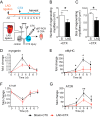

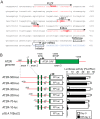

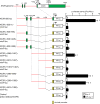

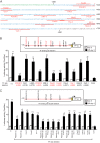
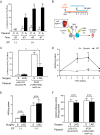
Similar articles
-
Angiotensin type 2 receptor signaling in satellite cells potentiates skeletal muscle regeneration.J Biol Chem. 2014 Sep 19;289(38):26239-26248. doi: 10.1074/jbc.M114.585521. Epub 2014 Aug 11. J Biol Chem. 2014. PMID: 25112871 Free PMC article.
-
Angiotensin II inhibits satellite cell proliferation and prevents skeletal muscle regeneration.J Biol Chem. 2013 Aug 16;288(33):23823-32. doi: 10.1074/jbc.M112.449074. Epub 2013 Jul 6. J Biol Chem. 2013. PMID: 23831688 Free PMC article.
-
Molecular mechanisms and signaling pathways of angiotensin II-induced muscle wasting: potential therapeutic targets for cardiac cachexia.Int J Biochem Cell Biol. 2013 Oct;45(10):2322-32. doi: 10.1016/j.biocel.2013.05.035. Epub 2013 Jun 13. Int J Biochem Cell Biol. 2013. PMID: 23769949 Free PMC article. Review.
-
Mechanisms of Cachexia in Chronic Disease States.Am J Med Sci. 2015 Oct;350(4):250-6. doi: 10.1097/MAJ.0000000000000511. Am J Med Sci. 2015. PMID: 26083652 Free PMC article.
-
Regulatory factors and cell populations involved in skeletal muscle regeneration.J Cell Physiol. 2010 Jul;224(1):7-16. doi: 10.1002/jcp.22127. J Cell Physiol. 2010. PMID: 20232319 Review.
Cited by
-
Angiotensin II Signal Transduction: An Update on Mechanisms of Physiology and Pathophysiology.Physiol Rev. 2018 Jul 1;98(3):1627-1738. doi: 10.1152/physrev.00038.2017. Physiol Rev. 2018. PMID: 29873596 Free PMC article. Review.
-
Differential Regulation of Male-Hormones-Related Enhancers Revealed by Chromatin Accessibility and Transcriptional Profiles in Pig Liver.Biomolecules. 2024 Apr 1;14(4):427. doi: 10.3390/biom14040427. Biomolecules. 2024. PMID: 38672444 Free PMC article.
-
Angiotensin II type-2 receptor signaling facilitates liver injury repair and regeneration via inactivation of Hippo pathway.Acta Pharmacol Sin. 2024 Jun;45(6):1201-1213. doi: 10.1038/s41401-024-01249-0. Epub 2024 Mar 15. Acta Pharmacol Sin. 2024. PMID: 38491160 Free PMC article.
-
Altered satellite cell dynamics accompany skeletal muscle atrophy during chronic illness, disuse, and aging.Curr Opin Clin Nutr Metab Care. 2017 Nov;20(6):447-452. doi: 10.1097/MCO.0000000000000409. Curr Opin Clin Nutr Metab Care. 2017. PMID: 28795971 Free PMC article. Review.
-
Role of Vitamin D in Cardiovascular Diseases.Endocrinol Metab Clin North Am. 2017 Dec;46(4):1039-1059. doi: 10.1016/j.ecl.2017.07.009. Epub 2017 Sep 29. Endocrinol Metab Clin North Am. 2017. PMID: 29080634 Free PMC article. Review.
References
-
- Anker S. D., Negassa A., Coats A. J., Afzal R., Poole-Wilson P. A., Cohn J. N., and Yusuf S. (2003) Prognostic importance of weight loss in chronic heart failure and the effect of treatment with angiotensin-converting-enzyme inhibitors: an observational study. Lancet 361, 1077–1083 - PubMed
MeSH terms
Substances
Grants and funding
LinkOut - more resources
Full Text Sources
Other Literature Sources
Medical
Molecular Biology Databases
Miscellaneous

